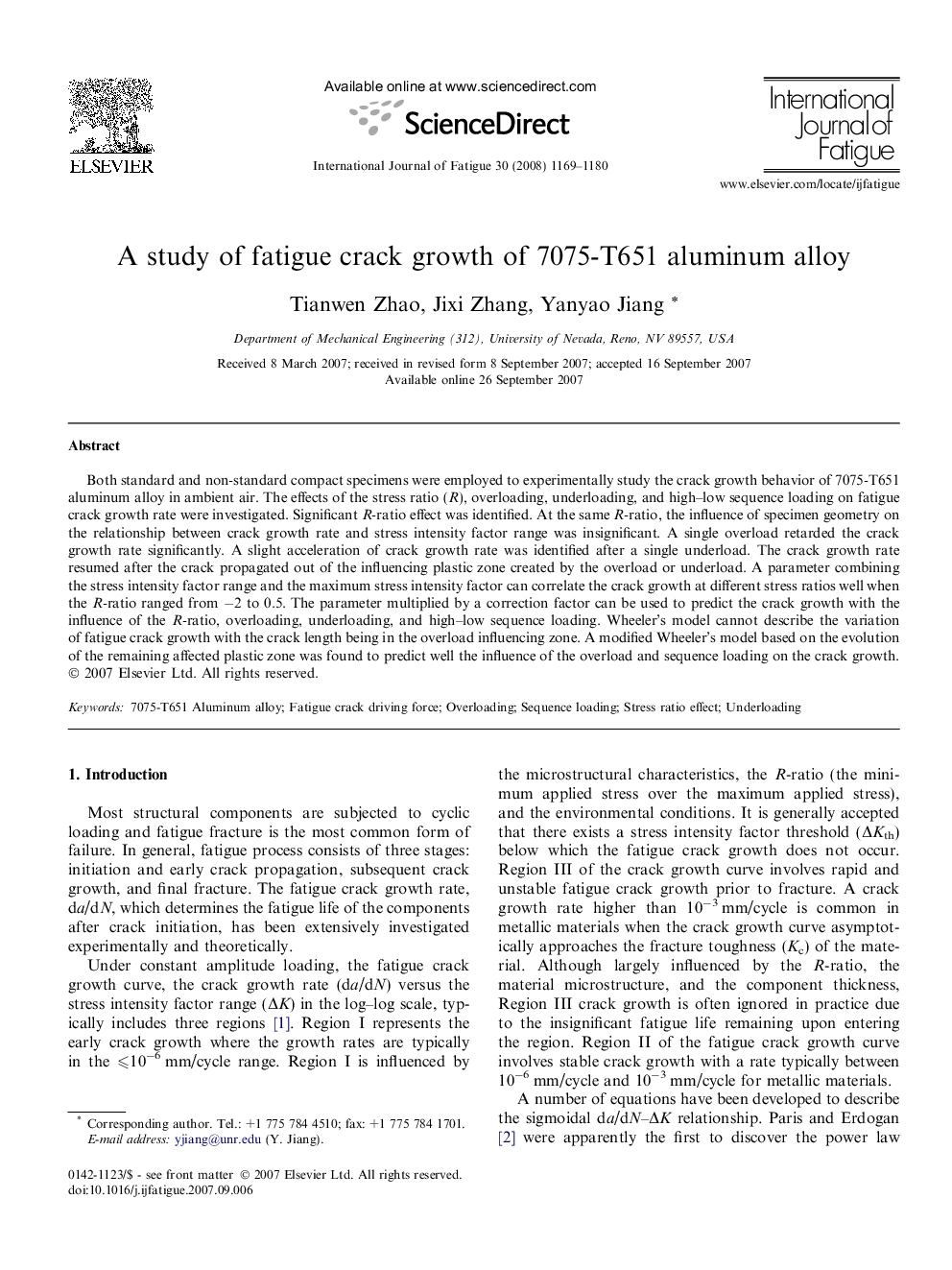| Article ID | Journal | Published Year | Pages | File Type |
|---|---|---|---|---|
| 775796 | International Journal of Fatigue | 2008 | 12 Pages |
Both standard and non-standard compact specimens were employed to experimentally study the crack growth behavior of 7075-T651 aluminum alloy in ambient air. The effects of the stress ratio (R), overloading, underloading, and high–low sequence loading on fatigue crack growth rate were investigated. Significant R-ratio effect was identified. At the same R-ratio, the influence of specimen geometry on the relationship between crack growth rate and stress intensity factor range was insignificant. A single overload retarded the crack growth rate significantly. A slight acceleration of crack growth rate was identified after a single underload. The crack growth rate resumed after the crack propagated out of the influencing plastic zone created by the overload or underload. A parameter combining the stress intensity factor range and the maximum stress intensity factor can correlate the crack growth at different stress ratios well when the R-ratio ranged from −2 to 0.5. The parameter multiplied by a correction factor can be used to predict the crack growth with the influence of the R-ratio, overloading, underloading, and high–low sequence loading. Wheeler’s model cannot describe the variation of fatigue crack growth with the crack length being in the overload influencing zone. A modified Wheeler’s model based on the evolution of the remaining affected plastic zone was found to predict well the influence of the overload and sequence loading on the crack growth.
